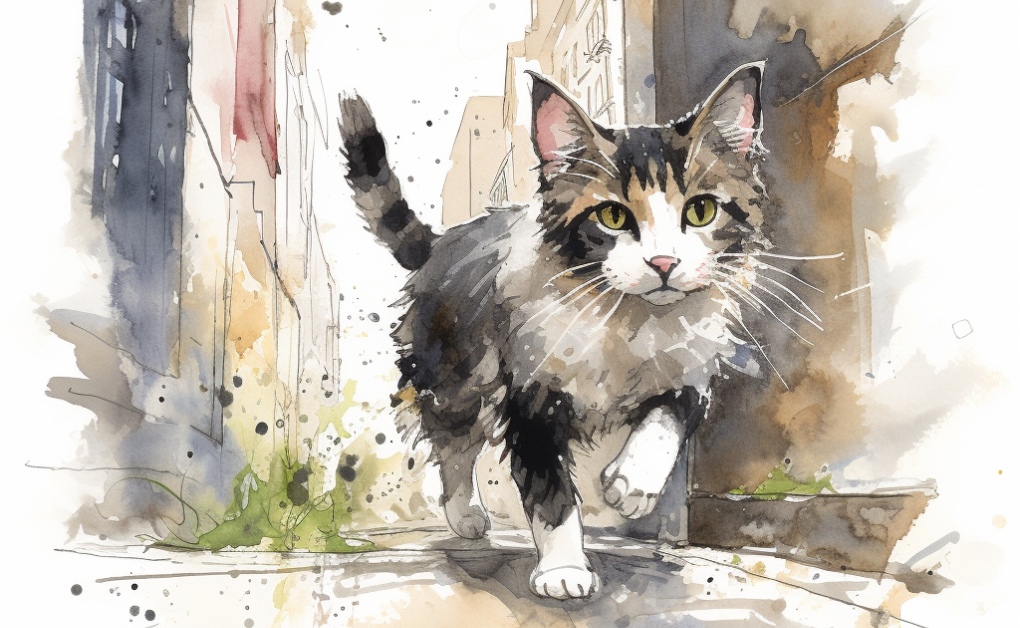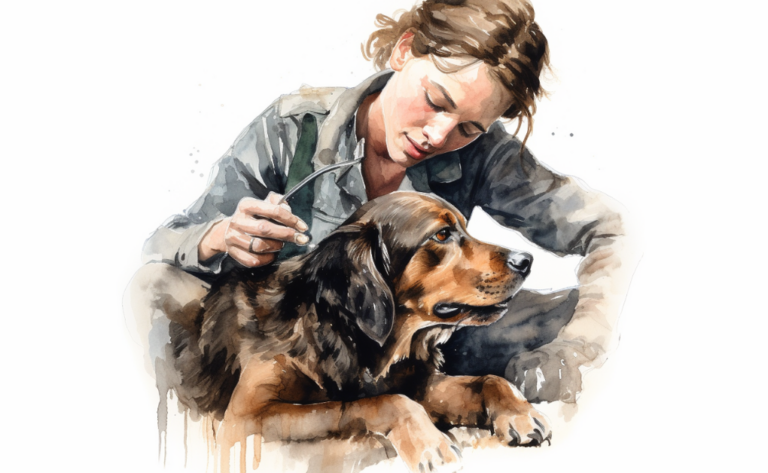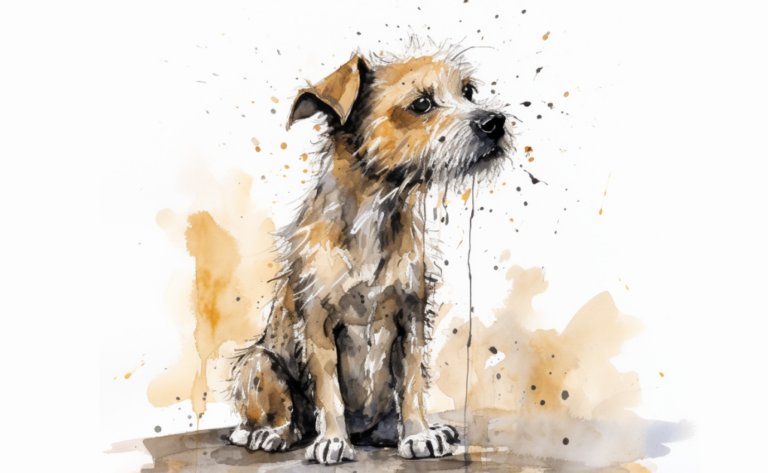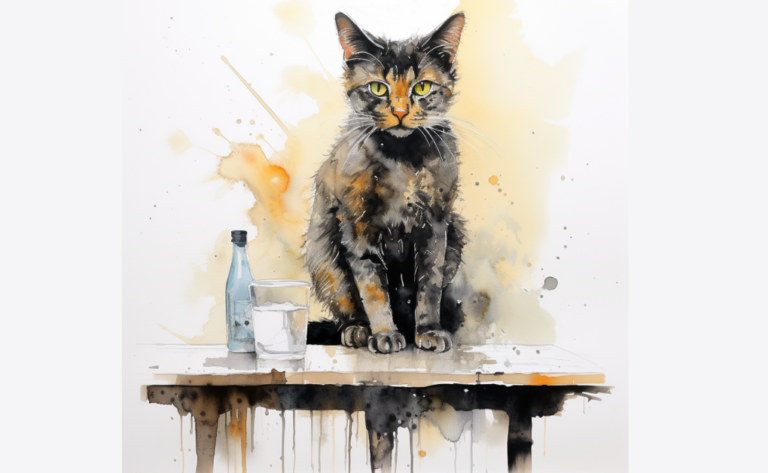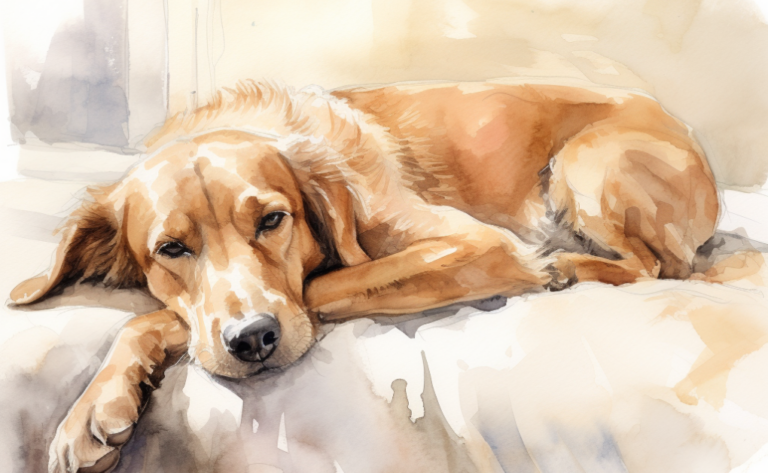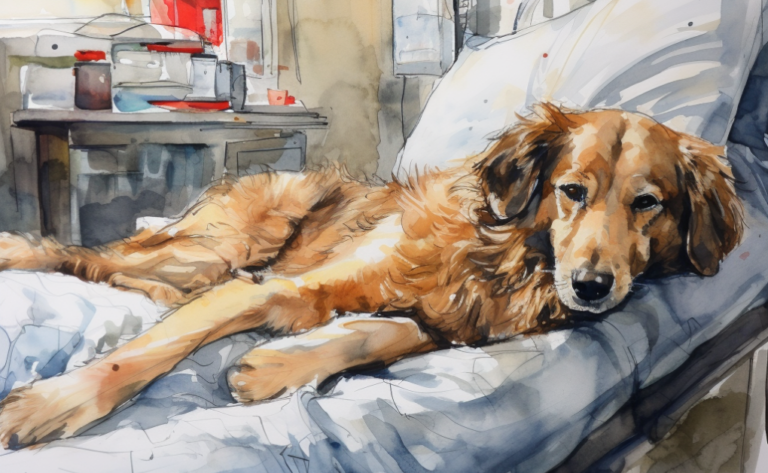What is Arthritis in Cats?
What is it?
How is it Treated?
Breed Predispositions
There is no specific breed predisposition to arthritis in cats. However, factors such as age, obesity, and certain medical conditions such as hip dysplasia or luxating patella may increase the risk of developing arthritis in cats.
Introduction
Lucy, a once-agile Bengal cat, had recently become less active and struggled with her usual jumps and strolls around the house. Her owner, Maria, grew concerned as she observed Lucy’s reluctance to climb the stairs and her stiff movements. Seeking answers, Maria took Lucy to the veterinarian for a thorough assessment. After a comprehensive examination, the vet diagnosed Lucy with arthritis, a condition affecting the joints in cats.
Arthritis is a condition that afflicts an older cat’s joints, resulting in chronic pain and inflammation. This ongoing situation negatively affects a cat’s mobility and overall quality of life. Cats with arthritis joint problems tend to struggle with activities such as moving around, jumping, or climbing. Over time, arthritis can occur and progressively worsen, leading to reduced joint function, increased stiffness, and decreased flexibility.
Chronic arthritis in cats necessitates consistent management strategies to relieve pain, allow cats to have as much movement as possible, and sustain the best achievable quality of life. Despite their reputation for independence, cats tend to rely on their owners for help managing this condition.
Types of Arthritis in Cats
Arthritis in cats can manifest in various forms, with different underlying causes and affected joints. Here are the most common types of arthritis seen in cats:
Osteoarthritis
Osteoarthritis, also known as degenerative joint disease, is the most common form of arthritis in cats. It affects the cartilage in the joints, causing it to break down and leading to inflammation and pain. Approximately 90 percent of cats suffer from osteoarthritis (OA) in at least one joint by the time they reach ten years old. Osteoarthritis can occur in any joint but most commonly affects the hips, knees, elbows, and spine. The gradual deterioration of the joint cartilage can result from wear and tear, joint trauma, or genetic factors.
Infectious Arthritis
Infectious arthritis in cats is caused by bacterial, viral, or fungal infections that affect the joints. It occurs when microorganisms enter the joint space, leading to inflammation and joint damage. Infectious arthritis in cats is relatively rare but can occur due to severe infections, such as bite wounds or systemic infections. Prompt diagnosis and treatment of the underlying infection are essential for managing infectious arthritis effectively.
Immune-Mediated Arthritis
Immune-mediated arthritis is an autoimmune condition in which the cat’s immune system mistakenly attacks its joint tissues, resulting in inflammation and joint damage. The exact cause of immune-mediated arthritis is poorly understood, but it is believed to have a genetic and immune system component. This form of arthritis is relatively rare in cats and can affect multiple joints symmetrically.
Traumatic Arthritis
Traumatic arthritis develops due to joint injuries, such as fractures, dislocations, or ligament tears. Trauma to the joints can cause long-term damage and lead to the development of arthritis over time. Cats involved in accidents or those with a history of joint trauma are at risk of developing traumatic arthritis.
Rheumatoid Arthritis
Rheumatoid arthritis is a rare autoimmune condition that can affect cats. It occurs when the immune system mistakenly attacks the lining of the joints, causing inflammation, pain, and joint damage. Rheumatoid arthritis typically affects multiple joints symmetrically and can also involve other organs in the body.
Hypertrophic Arthritis
Hypertrophic arthritis, also known as feline spondylosis or spinal arthritis, primarily affects the spine. It is characterized by the formation of bony outgrowths (osteophytes) along the edges of the vertebrae. These bony changes can lead to spinal stiffness, reduced mobility, and discomfort in affected cats.
Each type of arthritis in cats has its distinct characteristics, causes, and joints it affects. As in cats, this condition affects most older cats. It usually occurs when they’re over years old. However, this means that they are more susceptible to arthritis. Proper diagnosis is crucial to determine the type of arthritis and develop an appropriate treatment plan for the individual cat.
Causes of Feline Arthritis
A variety of causes can cause arthritis. These include:
Degenerative Causes
Degenerative causes are typically associated with the progressive deterioration and wear of the joint cartilage. Aging, for instance, naturally contributes to the wear and tear of a cat’s joints, potentially leading to arthritis. Joint trauma, such as fractures, dislocations, or ligament tears, can also precede the development of degenerative arthritis. Additionally, congenital abnormalities in the structure of a cat’s joints can make them more susceptible to arthritis.
Inflammatory Causes
Inflammatory causes, on the other hand, are linked to inflammation within the joints. Infectious agents like bacteria, viruses, or fungi can incite inflammatory arthritis. For instance, joint infections or viral infections like feline leukemia (FeLV) or feline immunodeficiency virus (FIV) could lead to joint inflammation. Similarly, a malfunctioning immune system that erroneously attacks joint tissues can result in immune-mediated arthritis. Furthermore, specific autoimmune diseases, such as systemic lupus erythematosus (SLE) or rheumatoid arthritis, are known to trigger arthritis. Allergic conditions, like allergic dermatitis or food allergies, could also incite joint inflammation.

Other Causes
Other contributing factors to arthritis encompass issues like obesity, genetic predispositions, and overuse or repetitive stress. Overweight cats can experience increased joint stress, heightening the risk of joint degeneration and arthritis. Certain cat breeds may have a higher genetic propensity for developing arthritis. Moreover, arthritis can occur in cats who perform repetitive activities or have excessive joint use, such as athletic or working cats, due to the recurring stress on their joints.
It’s vital to acknowledge that arthritis in cats can arise from a multifaceted combination of these factors. Recognizing these underlying causes assists veterinarians in formulating suitable treatment plans and preventive measures to manage arthritis effectively.
Symptoms of Arthritis in Cats
Cats suffering from arthritis, particularly osteoarthritis, may show various signs. As a cat owner, you may observe a decrease in activity or an increase in lethargy, hinting at chronic pain. You might also notice alterations in your cat’s behavior, such as grooming habits or deviations in using the litter box.
Arthritis is extremely capable of inciting a loss of appetite, leading to weight changes. Similarly, signs your cat might be experiencing discomfort include stiffness or difficulty in movement. You might also observe an altered posture or a reluctance to be touched, which could be evidence of degenerative joint disease.
The slow, progressive nature of arthritis might make these changes subtle initially, but as a vigilant owner, spotting these signs of osteoarthritis in cats early could lead to better management options. Remember, despite the impact of arthritis, many options are available to help ease the discomfort and slow your cat’s disease progression.
Diagnosing Arthritis in Cats
Detecting arthritis in cats can prove complex, as felines are naturally adept at concealing their pain and discomfort. Nonetheless, veterinarians utilize several methods to diagnose arthritis, or ‘arthritic cats,’ as they are often termed. Common diagnostic tactics include:
Physical Exam
The veterinarian gauges the cat’s overall mobility, stride, and joint function during a physical exam. They watch for indicators of stiffness or lameness and physically examine the joints for any irregularities.
Medical Background
The veterinarian amasses data regarding the cat’s medical background, which may encompass prior injuries, surgeries, or established joint problems. They will also probe for any shifts in the cat’s activity level or behavior and signs of pain or discomfort observed at home.
Radiography (X-rays)
X-rays are a frequent tool used to assess the health of the cat’s bones and joints. They can expose alterations in joint structure, like bone spur formation, joint space narrowing, or changes in bone density. X-rays assist in gauging the severity of joint damage and dismissing other potential causes of joint pain.
Arthrocentesis (Joint Aspiration)
Occasionally, the veterinarian might conduct a joint aspiration to gather synovial or joint fluid from the affected joint. The extracted fluid is studied for inflammation, infection, or other abnormalities, assisting in confirming the presence and progression of arthritis.
Blood Tests
Even though there’s no specific blood test for diagnosing arthritis, blood work can help exclude other conditions that might contribute to joint complications. It aids in evaluating the cat’s overall health and pinpointing any signs of inflammation or immune system irregularities.
Advanced Diagnostic Imaging
Further imaging methods like ultrasound or MRI (Magnetic Resonance Imaging) may be employed to inspect soft tissues, ligaments, and cartilage in more complex cases. These imaging techniques offer a comprehensive joint health assessment and help inform treatment decisions.
In synthesizing the cat’s medical history, physical exam findings, and diagnostic test results, the veterinarian can diagnose the cat with arthritis. This holistic evaluation is paramount in differentiating arthritis from other conditions, which paves the way for effective arthritis management tailored to the cat’s individual needs.
How to Treat Arthritis in Cats?
Arthritis is a long-term condition impacting the joints, leading to discomfort and pain in cats. While it lacks a definitive cure, various treatment options are available to manage its symptoms, enhancing our feline friends’ quality of life. Some frequently recommended ‘cat arthritis treatment options include:

Non-Steroidal Anti-Inflammatory Drugs (NSAIDs)
Frequently used in feline medicine, NSAIDs are recommended to alleviate pain and decrease inflammation associated with arthritis in cats. They function by blocking certain enzymes that drive inflammation. These drugs should be administered only under a veterinarian’s supervision due to their potential side effects and the risk of harm to cats.
Joint Supplements
‘Joint supplement’ options, incorporating glucosamine, chondroitin, and omega-3 fatty acids, can bolster joint health and combat inflammation. Available in multiple forms – tablets, liquids, or treats – these supplements typically serve as a long-term strategy to boost joint function and lessen pain.
Weight Management
Maintaining a balanced weight is critical for managing feline arthritis. Extra weight imposes more strain on the joints, thereby exacerbating the condition. A regulated diet with proper portion control and cat-appropriate regular exercise can assist in weight management and minimize joint stress.
Physical Therapy and Activity
Controlled exercise routines and physical therapy can benefit arthritic cats by enhancing joint mobility, muscle strength, and flexibility. A veterinarian or a veterinary physical therapist can assist in designing safe and suitable exercises for cats suffering from arthritis.
Environmental Adjustments
Modifying a cat’s surroundings can help in mitigating the impact of arthritis. Facilitating easy access to essential resources such as food, water, litter boxes, and rest areas by installing ramps or steps can lessen the need for straining activities like jumping or climbing, which can exacerbate joint discomfort. Furthermore, providing soft bedding and warmth can help ease sore joints.
Acupuncture and Laser Therapy
Alternative treatment options include therapies like acupuncture and low-level laser therapy, which have demonstrated the potential to alleviate pain and enhance mobility in cats with arthritis. These therapies stimulate blood flow and encourage the release of endorphins, natural ‘pain relief’ agents in the body. However, consultation with a veterinarian experienced in these treatments is crucial.
Pain Management
In certain cases, cats with severe arthritis may need extra pain management strategies. This could encompass using specific ‘pain medication,’ such as opioids or tramadol, to provide respite from chronic pain. A veterinarian must always oversee pain management to ensure correct dosing and minimize potential side effects.
It’s worth noting that treating arthritis in cats often entails a multimodal approach, meaning a combination of different strategies may be used to achieve optimal outcomes. The specific treatment plan will be based on the cat’s individual needs and the severity of the arthritis, among other factors. Regular follow-ups with the veterinarian are vital to monitor the cat’s response to the treatment and make any necessary modifications.
Prevention for Feline Arthritis
Preventing arthritis in cats involves taking proactive steps to support joint health and minimize the risk of joint damage. Here are some ways pet owners can help prevent arthritis in their cats:
- Maintain a Healthy Weight: Obesity puts extra stress on the joints, increasing the risk of arthritis. Ensure your cat maintains a healthy weight through a balanced diet and regular exercise.
- Provide a Balanced Diet: Feed your cat a high-quality, well-balanced diet that includes essential nutrients for joint health. Consider foods rich in omega-3 fatty acids, glucosamine, and chondroitin, which can support joint function.
- Regular Exercise: Encourage regular physical activity to keep your cat’s joints active and muscles strong. Engage in playtime and provide toys that promote movement and exercise.
- Environmental Adaptations: Create an environment conducive to your cat’s mobility. Provide easy access to litter boxes, feeding areas, and resting spots. Use ramps or steps to help your cat access higher surfaces.
- Regular Veterinary Check-ups: Schedule routine check-ups with your veterinarian to monitor your cat’s overall health and joint function. Early detection and intervention can help prevent the progression of joint disease.
- Provide Joint Support Supplements: Consult with your veterinarian about joint supplements that can promote joint health and reduce the risk of arthritis. These may include glucosamine, chondroitin, omega-3 fatty acids, and antioxidants.
- Soft and Supportive Bedding: Provide your cat with comfortable and supportive bedding to cushion their joints while resting or sleeping. Opt for beds with orthopedic properties.
- Manage Injuries and Infections: Promptly address any injuries or infections in your cat to prevent long-term joint damage. Seek veterinary care for proper diagnosis and treatment.
- Regular Dental Care: Dental infections can spread to the jaw joints and lead to joint problems. Maintain good dental hygiene by regularly brushing your cat’s teeth and scheduling professional dental cleanings as recommended.
- Monitor and Limit High-Impact Activities: Avoid activities that put excessive stress on the joints, such as jumping from high surfaces or rough play that may lead to injuries.
By following these preventive measures, pet owners can help reduce the risk of arthritis in their cats and support their overall joint health. Regular veterinary care and early intervention are key in identifying potential joint issues and implementing appropriate preventive measures.
Frequently Asked Questions
Disclaimer: The information provided on this veterinary website is intended for general educational purposes only and should not be considered as a substitute for professional veterinary advice, diagnosis, or treatment. Always consult a licensed veterinarian for any concerns or questions regarding the health and well-being of your pet. This website does not claim to cover every possible situation or provide exhaustive knowledge on the subjects presented. The owners and contributors of this website are not responsible for any harm or loss that may result from the use or misuse of the information provided herein.

